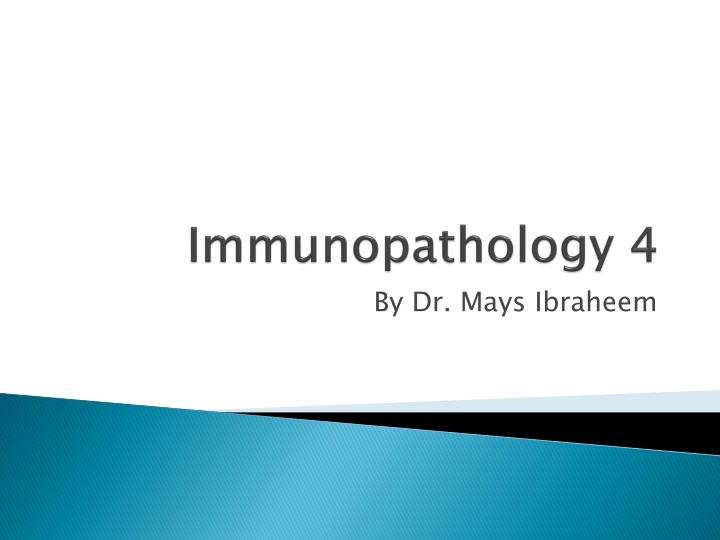
Amyloidosis: Causes, Types, and Implications
Amyloidosis is a disorder characterized by the deposition of misfolded proteins, affecting various organs and systems. Learn about its pathogenesis, types, associated conditions, and more in this comprehensive guide.
Download Presentation

Please find below an Image/Link to download the presentation.
The content on the website is provided AS IS for your information and personal use only. It may not be sold, licensed, or shared on other websites without obtaining consent from the author. If you encounter any issues during the download, it is possible that the publisher has removed the file from their server.
You are allowed to download the files provided on this website for personal or commercial use, subject to the condition that they are used lawfully. All files are the property of their respective owners.
The content on the website is provided AS IS for your information and personal use only. It may not be sold, licensed, or shared on other websites without obtaining consent from the author.
E N D
Presentation Transcript
Amyloidosis is a disorder characterized by the extracellular deposits of misfolded proteins that aggregate to form insoluble fibrils (beta-pleated sheet) conformation. Generally amyloid deposits cause tissue injury and impair normal function by causing pressure on cells and tissues but they do not evoke an inflammatory response. Common features of Amyloid: Individual subunit form -pleated sheets On H&E stain- looks amorphous eosinophilic deposits On Congo red stain- looks as red deposit Under polarized light- looks Apple green birefringence
Pathogenesis of Amyloidosis: The deposition of proteins in amyloidosis may result from: 1- misfolding and aggregation; Excessive production of proteins that are prone to 2- and tend to aggregate; Mutations produce proteins that cannot fold properly 3- extracellular proteins. Defective or incomplete proteolytic degradation of
Amyloid light chain (AL): Immunoglobulin light chains 1) Derived from plasma cells; lambda light chain amyloid occurs more often than kappa; associated with plasma cell tumors (e.g., multiple myeloma). Amyloid-associated (AA): 2. Synthesized by hepatocytes as part of the acute phase response ; AA amyloid is associated with chronic inflammatory states. -Amyloid (A ): 3. It derives from a transmembrane amyloid precursor protein, forms the core of cerebral plaques and deposits within cerebral vessel walls in Alzheimer disease. Transthyretin (TTR): 4. A normal serum protein that binds and transports thyroxine and retinol. Excess amounts of normal TTR can deposit in geriatric hearts 2-microglobulin: 5. Component of class I HLA molecules and a normal serum protein; complicates long-term hemodialysis.
1. Systemic (generalized), involving several organ systems, or 2. Localized, when deposits are limited to a single organ.
is associated with the following conditions Primary amyloidosis: AL type of amyloid that form of fibrillary protein: kappa or lambda light chains e.g. is plasma cell disorder (multiple myeloma, and B cell lymphoma Reactive systemic amyloidosis( secondary amyloidosis) AA type of amyloid in the form of serum amyloid SAA (acute phase reactant protein elevated with ongoing inflammation and neoplasia) e.g. are Rheumatoid arthritis , systemic lupus erythematosus, TB, cancer , etc. Familial Mediterranean fever AA type of amyloid in the form of SAA, it is an Autosomal recessive disease cause recurrent inflammation, fever, and neutrophil dysfunction. Hemodialysis associated amyloidosis: 2 microglobulin amyloid in patients on chronic hemodialysis. This cause carpel tunnel syndrome and joint disease
Senile cerebral amyloidosis( Alzheimer disease) 1. A amyloid found in Alzhiemer plaque in cerebral vessels Senile cardiac amyloidosis: 2. TTR amyloid (transthyretin), men more than 70 years and may cause heart failure Endocrine type 3. Occurs in tumors associated with hormone synthesis; example, thyroid medullary carcinoma making procalcitonin that deposit as amyloid fibrils.
Kidney: Most commonly involved organ in the form of nephrotic syndrome Heart: Can cause restrictive cardiomyopathy and low voltage ECG with arrhythmias and congestive heart failure Hepatosplenomegaly Gastrointestinal tract: Present with tongue enlargement and malabsorption Diagnosis of amyloidosis: by biopsy of the rectal mucosa, gingiva or the abdominal fat pad
Thank you Thank you















